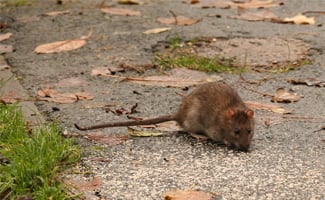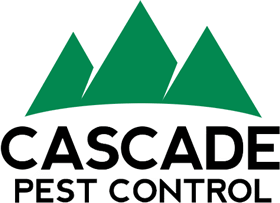Author: Kurt Treftz, Cascade Pest Control

It is no secret that Seattle and its surrounding area have a problem with rodents.
Rats have found Seattle and the Pacific Northwest and its sprawling metropolis an extremely welcoming haven.
Public health can quickly be impacted by these insidious critters. Therefore, we need to understand the risks and know how to respond.
What are the Impacts of Rodents on Public Health in Seattle?
Disease Transmission
Rats are more than nuisance pests; they can also pose a significant danger. Rats and rodents carry a range of diseases that can impact public health. Hantavirus, leptospirosis, and salmonellosis are common diseases transmitted by rats. And you don’t have to see a rat to experience the impact. Droppings, urine, and even contaminated inhaled particles can spread illness. They are also known to transfer parasites, such as fleas, ticks, and mites, which can further spread diseases.
Allergies & Respiratory Issues
Even if you don’t get sick from viruses, bacteria, and parasites, you can experience allergic and respiratory issues from exposure to rodents. Urine, droppings, and hair can contribute to indoor air quality issues that lead to symptoms such as sneezing, runny noses, itchy eyes, and skin rashes in individuals with allergies. Living near rodents in poorly ventilated areas, which can easily occur in urban environments, can lead to respiratory issues, particularly in vulnerable populations that spend a significant amount of time indoors, such as young children and the elderly.
Food Contamination
These insidious critters are skilled foragers, and once they have gained access to your home, they are quick to capitalize on the availability of food and water. Your sources may easily become contaminated and unsafe for human consumption. Rats can chew through almost any packaging, including sealed containers. They are often attracted to pet food in bowls that are commonly left out and open. Rats can also pollute water sources as they chew through pipes and crawl up sewer lines.
Ingesting contaminated food and water can pose a significant health risk, including foodborne illnesses, digestive issues, and other complications.
Structural Damage & Fire Risk
Rodents’ incessant chewing can lead to damage that poses a health risk. Rats will chew on wiring, insulation, pipes, and even wooden support beams to appease their insatiable need to gnaw. This can lead to electrical problems, potential fire from exposed wires, and even compromised structural integrity.
As rodents forage and tunnel through a structure, they can compromise insulation, resulting in poor energy efficiency. HVAC systems must work harder, resulting in skyrocketing energy bills and reducing the system’s lifespan.
Neighborhood Safety
In addition to all of this, rats can cause foul odors and unpleasant sights that compromise neighborhood health and safety. Homes can be overrun by the distinct odor, which is difficult to clean up. The stress and anxiety caused in a community by living with glimpses of these scurrying pests can take a toll.
Drivers of Rodent-Related Public Health Risks
Rapid Reproduction & Infestation Growth
It can be challenging to stay ahead of rodent-related risks due to the rapid growth of these populations. A rat can reach sexual maturity within weeks. Each female rat can produce multiple large litters each year. A small population can rapidly escalate into a significant problem in a very short period of time. Soon, you have an infestation on your hands.
Urban & Environmental Factors
Urban environments are all too capable of supporting these large infestations. The sprawl of buildings, poor waste management, and structural deficiencies, such as dilapidated and abandoned buildings, are ideal breeding grounds for rats, providing readily available food and water, as well as safe nesting sites. Infestations continue to grow.
Response to the Public Health Risk of Rodents
Targeted CO2 treatment
Throughout parks in Seattle, CO2 has become a “discrete and effective” way to manage rodent populations. After identifying rat burrows, park district employees deliver a dose of CO2 directly into urban rodent hot spots. It leaves no poisonous residue or environmental impact behind and safely reduces the rat population.
Sanitation Improvements
Timely pickup of waste and locked trash help keep rats away from a ready food source. These efforts can be done by anyone. Less trash means fewer rodents. Keeping streets and neighborhoods clean goes a long way in deterring rodents.
Exclusion Measures
Keeping rodents out in the first place is the primary step in competing with these pests. Buildings should be kept in good repair, with leaks and openings sealed. Brush should be trimmed away from the home, pet food should be picked up, and fruit trees should be maintained.
Public Education
Educating the public on steps to reduce rodent populations is also important. If everyone works together, the results are much more likely.
Rats in Seattle are not a new issue, but they are one that should never be taken lightly. If you suspect you have a rodent infestation, don’t wait. Contact Cascade Pest Control today 888-989-8979.
